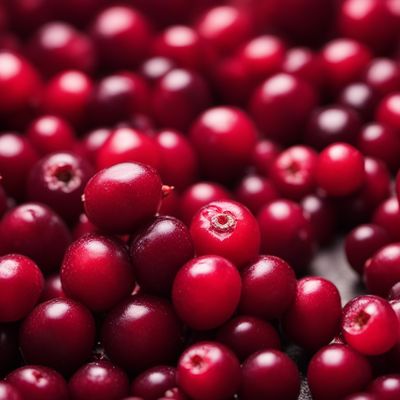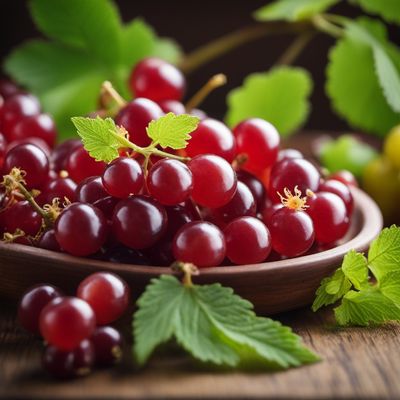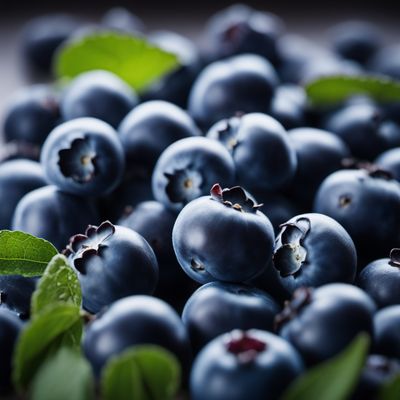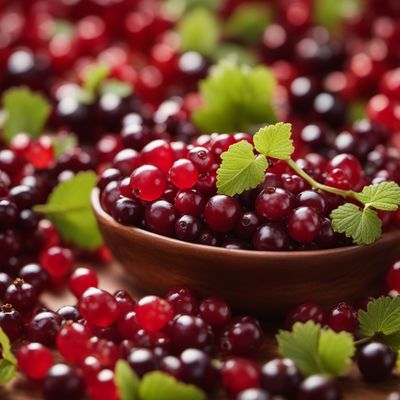
Ingredient
Other small fruits and berries
Nature's Tiny Treasures
Other small fruits and berries are a category of fruits that are typically small in size but big on taste. From vibrant blueberries and tangy raspberries to exotic fruits like goji berries and physalis, these tiny treasures offer a delightful combination of sweetness, tartness, and juiciness. They are versatile ingredients that can be enjoyed fresh, used in baking, or incorporated into a variety of dishes.
Origins and history
Small fruits and berries have been enjoyed by humans for centuries, with evidence of their consumption dating back to ancient times. They have been valued for their natural sweetness, vibrant colors, and health benefits. Many small fruits and berries are native to specific regions or countries, where they have become an integral part of the local cuisine and cultural traditions.
Nutritional information
Small fruits and berries are packed with essential vitamins, minerals, antioxidants, and dietary fiber. They are low in calories and fat, making them a healthy choice for snacking or incorporating into meals. They are also a good source of natural sugars, providing a quick energy boost.
Allergens
Some individuals may be allergic to certain small fruits and berries, such as strawberries or raspberries. It is important to be aware of any known allergies and consult with a healthcare professional if necessary.
How to select
When selecting small fruits and berries, look for fruits that are plump, firm, and brightly colored. Avoid fruits that are overly soft, bruised, or moldy. Smell the fruit to ensure it has a fresh, sweet aroma. If purchasing packaged berries, check for any signs of moisture or mold.
Storage recommendations
To prolong the freshness of small fruits and berries, store them in the refrigerator in a breathable container or a perforated plastic bag. Avoid washing the fruits until just before consuming to prevent moisture buildup. Consume them within a few days of purchase for the best flavor and texture.
How to produce
Many small fruits and berries can be grown in home gardens or small containers, making them an excellent choice for amateur gardeners. Research the specific fruit or berry you wish to grow and follow the recommended planting, care, and harvesting instructions. Consider factors such as sunlight, soil conditions, and climate suitability for optimal growth.
Preparation tips
Small fruits and berries can be enjoyed fresh as a healthy snack, added to breakfast cereals, yogurt, or smoothies, or used in a variety of sweet and savory recipes. They are commonly used in desserts like pies, tarts, jams, and fruit salads. They can also be incorporated into savory dishes such as salads, sauces, or marinades for a touch of natural sweetness.
Substitutions
There are various substitutions available for small fruits and berries, depending on the specific recipe or dish. For example, if a recipe calls for blueberries, you can substitute them with other small berries like raspberries or blackberries. Similarly, if a recipe calls for strawberries, you can use sliced peaches or mangoes for a similar texture and sweetness.
Culinary uses
Small fruits and berries are incredibly versatile and can be used in a wide range of culinary applications. They are commonly used in baking, desserts, smoothies, salads, sauces, and jams. They can also be used to garnish cocktails or infused into flavored waters or teas for a refreshing twist.
Availability
Small fruits and berries are cultivated in various regions and countries around the world. Some fruits, like blueberries and strawberries, are widely available in many countries, while others may be more regionally specific. The availability of specific small fruits and berries may also vary depending on the season.
More ingredients from this category

Azaroles and similar-
The Forgotten Fruits: Azaroles and Similar

Cranberries and similar-
The Tangy Gems of Autumn

Gooseberries and similar-
Tangy Gems: Exploring the World of Gooseberries and Similar Fruits

Other not listed other small fruits and berries
The Delightful World of Small Fruits and Berries

Rose hips and similar-
The Vibrant Powerhouse: Rose Hips

Elderberries and similar-
The Immunity-Boosting Power of Elderberries

Mulberries (black and white) and similar-
Nature's Sweet and Juicy Gems

Blueberries and similar-
The Berry Bliss

Currants and similar-
Tiny Tangy Gems